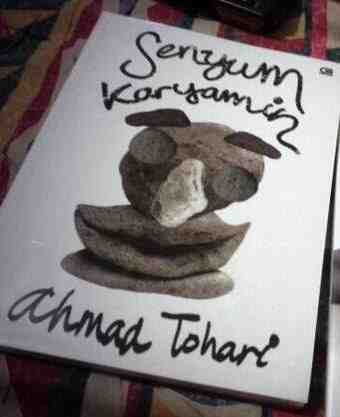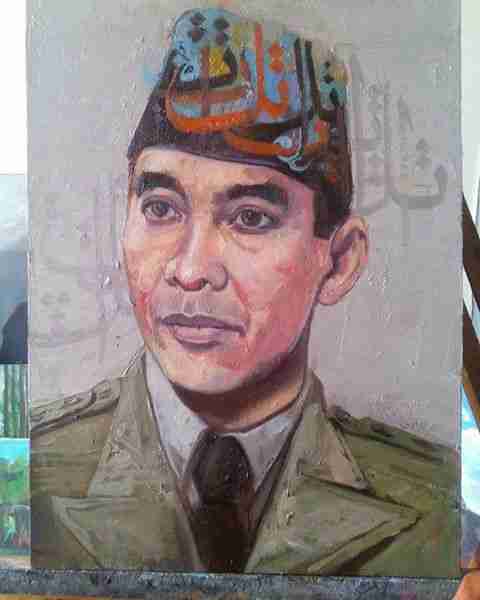Orientalis Muda Mengunggah Bibliografi tentang Penyakit dan Wabah dalam Peradaban Islam Pra Modern

Di tengah wabah Covid-19 yang melanda dunia sekarang ini, kerja-kerja intelektual terus dilakukan oleh para sarjana di bidangnya masing-masing. Tak saja para ahli-ahli kedokteran yang terus berupaya menemukan vaksin Corona ini, tapi juga para sarjana yang memiliki konsen di dunia keilmuan Islam klasik juga berupaya menggali kembali khazanah keilmuan yang berkaitan dengan sejarah wabah.
Elaine van Dalen, Asisten Profesor Studi Islam Klasik dari Columbia University, dalam beberapa pekan belakangan mengunggah banyak sekali informasi yang berkaitan dengan sejarah wabah yang pernah menimpa dunia di akun media sosialnya. Terutama ihwal bagaimana para sarjana Islam merespons wabah.
Seorang filolog yang juga memiliki keahlian di bidang sejarah kedokteran dan sains Islam klasik berhasil merangkum bibliografi tentang Penyebaran Penyakit, Epidemi, dan Wabah di dunia Islam Pra Modern.
Ia mengumpulkan sejumlah sumber primer: teks-teks yang ditulis oleh para sarjana Islam (?) klasik dari dua sudut pandang; kedokteran dan teologis. Dari sudut pandang kedokteran misalnya ia memasukkan ahli-ahli kedokteran Islam yang menulis karya tentang kedokteran seperti Ibnu Sina, Ar-Razi, hingga Ibn Ridlwan yang karyanya memang ditulis untuk merespons wabah yang terjadi di Mesir kala itu.
Sedangkan karya-karya seperti Ath-Thib An-Nabawi-nya Ibn Qayyim Al-Jauziyyah, Ta’wil Mukhtalif Hadis karya Ibn Qutaibah ia masukkan dalam kategori perspektif teologis.
Selain itu, ia juga memberikan “jalan” untuk memudahkan para pengkaji khazanah Islam klasik dengan merangkum sejumlah buku-buku sekunder yang mengkaji tentang wabah dalam dunia Islam klasik. Sebuah informasi yang luar biasa dan patut mendapatkan apresiasi.
Berikut daftar bibliografi yang telah berhasil dirangkum oleh Van Dalen:
Disease Transmission, Epidemics and Plague in Pre-Modern Islam,
A Bibliography
Secondary Sources
Arié, Rachel. “Un opuscule Grenadin sur la peste noire de 1348: La “naṣīḥa” de Muḥammad al-Saqūrī.” Boletín de la Asociación Española de Orientalistas 3 (1967), pp. 189– 99.
al-Bar, Muhammad ʿAlī, al-ʿAdwā: Bayna l-tibb wa-hadīth al-mustafā, 4th ed. (Jedda: al-Dār al-sa‘ūdīya li-l-nashr wa-l-tawzī‘, 1401/1981), pp. 23-70.
Congourdeau, Marie-Hélène, “La peste noire à Constantinople de 1348 à 1466,” Medicina nei secoli 11, no.2 (1999), pp.377-90.
Congourdeau Marie-Hélène and Mohammed Melhaoui, “La perception de la peste en pays chrétien byzantin et musulman,” Revue des Études Byzantines 59 (2001), pp. 95–124.
Conrad, Lawrence. “Arabic Plague Chronologies and Treatises: Social and Historical Factors in the Formation of a Literary Genre.” Studia Islamica 54 (1981): 51– 95.
——— “A Ninth- Century Muslim Scholar’s Discussion of Contagion.” In Contagion: Perspectives from Pre- modern Societies, edited by Lawrence Conrad and Dominik Wujastyk, 163– 77. Burlington, VT:Ashgate, 2000.
——— “ʿUmar at Sargh: The Evolution of an Umayyad Tradition on Flight from the Plague.” In Story- Telling in the Framework of Non- fictional Arabic Literature, edited by Stefan Leder, 488– 528. Wiesbaden: Harrassowitz, 1998.
——— and Dominik Wujastyk, eds. Contagion: Perspectives from Premodern Societies. Burlington, VT: Ashgate, 2000.
Michael W. Dols, “The Comparative Communal Responses to the Black Death in Muslim and Christian Societies, Viator 5 (1974), 269–87
——— The Black Death in the Middle East, Princeton: Princeton University Press, 1977.
——— “Plague in Early Islamic History,” Jaos, vol.94, no. 3 (1974), pp.371-383.
——— “Ibn al-Wardi’s Risalah al-naba’ ‘an al-waba. A Translation of a Major Source for the History of the Black Death in the Middle East,” in Near Eastern Numismatics. Iconography, Epigraphy, and History: Studies in Honor of George C. Miles, ed. D. K. Kouymijian (Beirut, 1974), pp. 443-55.
——— “Al-Manbijī’s Report of the Plague: A Treatise on the Plague of 764- 65/1362-64 in the Middle East,” in D. Williman (ed.), The Black Death. The Impact of the Fourteenth Century Plague. Binghamton, NY: Center for Medieval and Renaissance Studies, 1982, pp. 65-75.
——— “The General Mortality of the Black Death in the Mamluk Empire,” in A.L. Udovitch (ed.), The Islamic Middle East, 700-1900: Studies in Economic and Social History. Princeton: Darwin Press, 1981, pp. 397-428.
——— “The Leper in Medieval Islamic Society,” Speculum 58 (1983), pp. 891-916.
Gigandet, Suzanne, “Abū Ǧa‘far Aḥad ibn Hātima et le grande peste de 749/1348 dans sa ville Almería,” Arabica 53, no. 1 (2006), pp. 143-52.
———“Trois maqālāt au sujet des épidémies de peste en Andalousie et au Maghreb.” Arabica 48 (2001), pp. 401– 7.
Green, Monica, Syllabus: The Black Death: Pandemic Disease in the Medieval World (2017)
https://www.academia.edu/31479873/The_Black_Death_-_Syllabus_2017_-_Group_Readings.pdf.
——— ed., Pandemic Disease in the Medieval World: Rethinking the Black Death, Kalamazoo: ARC Medieval Press, 2014. https://scholarworks.wmich.edu/medieval_globe/1/
Hopley, Russell, 2010, “Contagion in Islamic Lands: Responses from Medieval Andalusia and North Africa”, in Journal for Early Modern Cultural Studies, Vol. 10, No. 2, Rhetorics of Plague, pp. 45-64
Kremer, Albert von, “Ueber die grossen Seuchen des Orients nach arabischen Quellen,” SB Wien, XCVI (1880), pp. 69-156.
Neustadt, David, “The Plague and Its Effects upon the Mamlûk Army.” Journal of the Royal Asiatic Society 78, no. 1-2 (1946), pp. 67-73.
Pormann, Peter E., and Emilie Savage-Smith. Medieval Islamic Medicine. Edinburgh: Edinburgh University Press, 2007.
Renaud, H.P.J., Les Maladies pestilentielles dans l’Orthodoxie Islamique,” Bulletin d’Institut d’Hygiène de Maroc, vol. 3 Rabat, 1934.
Saif, Liana, “Between medicine and magic: Spiritual aetiology and therapeutics in Medieval Islam.” In: Siam Bhayro and Catherine Rider, eds., Demons and Illness from Antiquity to the Early-Modern Period, Leiden, Brill 2017, pp. 313-338.
Seidel, Ernst, “Die Lehre von der Kontagion bei den Arabern”, Archiv für Geschichte der Medizin 6 (1913): 81-93.
Stearns, Justin, Infectious Ideas: Contagion in Premodern Islamic and Christian Thought in the Western Mediterranean. Baltimore, Md.: Johns Hopkins University Press, 2011.
——— “Contagion in Theology and Law: Ethical Considerations in the Writings of Two 14th Century Scholars of Naṣrid Granada.” Islamic Law and Society 14 (2007), pp. 109– 29.
——— “Contagion,” Encyclopedia of Islam, 3rd ed. Leiden: Brill, 2011.
——— “New Directions in the Study of Religious Responses to the Black Death.” History Compass 7 (2009), pp. 1– 13.
Strohmaier, Gotthard. “Die Ansteckung als theologisches und als medizinisches Problem.” Oriente Moderno 19 (2000), pp. 631– 45.
Sublet, Jacqueline “La Peste prise aux rêts de la jurisprudence: Le Traité d’Ibn Haǧar al-‘Asqalani sur la peste,” Studia Islamica 33 (Paris, 1971), pp. 141-49.
Touati, Francois-Olivier. "Contagion and Leprosy: Myth, Ideas and Evolution in Medieval Minds and Societies.” In Contagion: Perspectives from Pre-Modern Societies. Ed. Lawrence I. Conrad and Dominik Wujastyk. Aldershot: Ashgate, 2000. 179-201.
Ullmann, Manfred, Die Medizin im Islam (Leiden: E. J. Brill, 1970), pp.242-50.
——— Islamic Medicine, 1978, “The transmissibility of Illnesses and the Plague”, Edinburgh University Press, pp.86-96.
Varlık, Nükhet, Plague and Empire in the Early Modern Mediterranean World: The Ottoman Experience, 1347-1600 (Cambridge: Cambridge University Press, 2015)
Wiet, Gaston, La Grande Peste Noire en Syrie et en Egypte. G.P. Maisonneuve et Larose, 1962.
Contagion and Miasma in Greek Medicine (selection):
Grmek, M. Les vicissitudes des notions d'infection, de contagion et de germes dans la médecine antique, Mémoires V, Saint-Étienne, 1984.
Jouanna, Jacques, “Air, Miasma, and Contagion in the time of Hippocrates and the Survival of Miasmas in post-Hippocratic Medicine (Rufus of Ephesus, Galen, and Palladius)”, in Jacques Jouanna, Greek Medicine from Hippocrates to Galen, Leiden: Brill, 2012, pp.121-137.
Leven, Karl-Heinz, “Miasma und Metadosis. Antike Vorstellungen von Ansteckung,” in Medizin, Gesellschaft und Geschichte, Jahrbuch des Instituts für Geschichte der Medizin der Robert Bosch Stiftung 11 (1992), pp. 43-73.
Marx, K. F. H. Origines contagii. Karlsruhe: D. R. Marx, 1824.
Nutton, Vivian, “Did the Greeks Have a Word for It? Contagion and Contagion Theory in Classical Antiquity.” In Contagion: Perspectives from Pre- modern Societies, edited by Lawrence Conrad and Dominik Wujastyk Burlington, VT: Ashgate, 2000 pp. 137-162.
Temkin, Owsei. “An Historical Analysis of the Concept of Infection.” In The Double Face of Janus, Reprint, Baltimore: Johns Hopkins University Press, 1977, pp. 456– 71.
Classical Islamic Physicians on Transmission of Disease (selection):
Qustā b. Lūqā (d.912), Kitāb fī l-iʿdāʾ and Kitāb fī l-wabāʾ wa-asbābihi:
Abhandlung über die Ansteckung von Qusṭā Ibn Lūqā, ed. and trans. Hartmut Fändrich, Stuttgart, 1987.
al-Rāzī (d. ca. 313/925), Al-Manṣūrī fī l-tibb, ed. Ḥāzim al-Bakrī al-Siddīqī (Kuwayt: Maʿhad al-makhṭūṭāt al-‘arabīya, 1408/1987), 225, pp.12-18.
al-Majūsī (wr. ca. 363-7/973-8), Kāmil al-ṣināʿa al-tibbiya (Cairo: al-Matba‘a al-kubrā al-amīrīya, AH 1294), II, pp. 64-65.
Ibn Sīnā (d. 436/1037), Al-Qānūn fī al-tibb (Cairo: al-Matba‘a al-‘amira, AH 1294), I, 79, pp. 9-22.
Ibn Riḍwān (d.c.1061), Kitāb Dafʿ maḍārr al-abdān:
Adil S. Gamal, and Michael Dols, Medieval Islamic medicine: Ibn Ridwan’s treatise “On the prevention of bodily Ills in Egypt”. Berkley, Los Angeles, London: University of California Press, 1984.
Theological Perspectives on Contagion and Plague Treatises (selection)
Ibn Qutayba (d.889), Taʾwīl mukhtalif al-ḥadīth, ed. Muhammad Muhy l-Din al-Asfar, Beirut: al-Maktab al-islamī and Dār al-ishrāq, 1409/1989.
Al-Jawziyya, Ibn Qayyim (d.1350). “Medicine of the Prophet,” trans. Penelope Johnstone (Cambridge, 1998).
Ibn Hajar al-ʿAsqalānī (d. 852/1449), Badhl al-Māʿūn fi faḍl at-Ṭāʿūn. Riyad: Dār al-ʿĀṣima, 1990.
https://archive.org/details/Library.mmn_20150901/mode/2up
al-Shaqūrī, Muhammad ibn ʿAlī al-Lakhmī, d. 749/1348, Naṣīḥa fī al-awbiʾa, ‘An Advisory Notice concerning the Plague’.
Taḥqīq al-nabāʾ ʿan amr al-wabāʾ. Biblioteca del Escorial. MS Arab. 1785, fols. 106a-111a.
Gigandet, Suzanne. “Trois maqālāt au sujet des épidémies de peste en Andalousie et au Maghreb.” Arabica 48 (2001), pp. 401– 7.
Arié, Rachel. “Un opuscule Grenadin sur la peste noire de 1348: La “naṣīḥa” de Muḥammad al-Saqūrī.” Boletín de la Asociación Española de Orientalistas 3 (1967), pp. 189– 99.
Ibn al-Wardī, d. 749/1349, Risālat an-nabāʾ ʿan al-wabāʾ, trans. Michael W. Dols in Dickran K. Kouymjian, ed. Near Eastern Numismatics, Iconography, Epigraphy and History. Beirut: American University of Beirut, 1974, pp.443– 55.
Abū Ǧaʿfar ibn Khātima al-Anṣārī (d. 770/1369), Taḥṣīl al-gharaḍ al-qāṣid fī tafṣīl al-maraḍ al-wāfid (The Attainment of the Goal of the Seeker for Information concerning the Epidemic):
“La grande peste en Espagne musulmane au XIVe siècle: le récit d’un contemporain de la pandémie du XIVe siècle,” ed. and trans. Suzanne Gigandet, Études médiévales, modernes et arabes (Damascus: Institut français du Proche-Orient, 2010), available as e-book: http://books.openedition.org/ifpo/1436.
——— “Description and Remedy for Escaping the Plague,” from John Aberth, The Black Death: The Great Mortality of 1348-1350. A Brief History with Documents. New York: Palgrave MacMillan, 2005, pp. 55-62.
——— “Die Schrift von Abi Jaʿfar Ahmed ibn ʿAli ibn Mohammed ibn ʿAli ibn Khatimah aus Almeriah ueber die Pest.” Translated by Taha Dinanah. Archiv für Geschichte der Medizin 19 (1927), pp. 27–81.
Ibn al-Khātib, d. 776/1375, Muqniʿat as-sāʾil ʿan al-maraḍ al-hāʾil, That Which Satisfies the Questioner Regarding the Appalling Illness:
“Ibnulkhatîbs Bericht über die Pest.” In Sitzungsberichte der königlichen bayerischen Akademie der Wissenschaften zu München, edited and translated by M. J. Müller, 2:1– 34. Munich: J. G. Weiss, 1863.
——— Al- Iḥāṭa. 4 vols. Cairo: Maktabat al-Khānjī, 2001.
https://archive.org/stream/AlIehataFeyAkhbarGernata01#mode/2up
Ibn Abī Ḥajala al-Tilimsānī (d.1375) Sulwat al-Ḥazīn fī mawt al-banīn, ed. by Mukhaymar Ṣāliḥ Mūsā Yaḥyā, ʿAmmān: Dār al-Fayḥāʾ, 1987.
al-Manbijī, d. 1383, Tasliyat ahl al-maṣāʾib, Ḥadāʾiq al-Qubbah: Dār al-Furqān, 1983.
Michael Dols, “Al-Manbijī’s Report of the Plague: A Treatise on the Plague of 764- 65/1362-64 in the Middle East,” in D. Williman (ed.), The Black Death. The Impact of the Fourteenth Century Plague. Binghamton, NY: Center for Medieval and Renaissance Studies, 1982, pp. 65-75.
Ibn Khaldūn (d.1406), The Introduction to History: The Muqaddimah. Translated by Franz Rosenthal. Abridged and edited by N. A. Dawood. Princeton, NJ: Princeton University Press, 1969.
al-Maqrīzī, d. 845/1442, Al-Sulūk li-maʿrifat duwal al-mulūk, ed. By Muḥammad Ziyadah, Cairo: Matbaʿat Dār al-Kutub al-Miṣriya, 1936, 4:822–26.
https://www.homeworkmarket.com/sites/default/files/qx/16/05/16/04/the_plague_in_cairo_1.pdf



